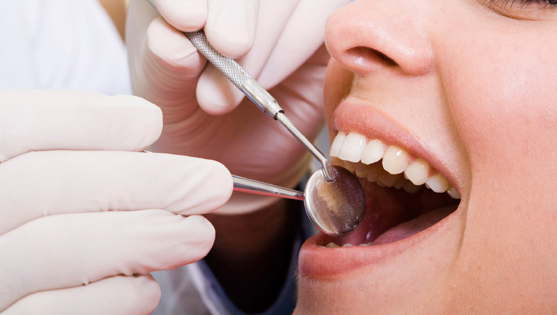Going to the dentist hasn’t always been top of mind for many. It can be a stressful time, especially for those who don’t know what to expect.
Dentists can’t stress enough how important oral health is, as it is tied to many other health issues that can arise if dental issues are left unchecked. With this in mind, Arizona’s oral health needs some work.
There is a divide between the number of dentists in Arizona’s metropolitan and rural areas, dental health literacy is low, costs for care are high, there are problems with Medicaid benefits, utilization of benefits is low and there is a lack of philanthropy in dentistry.
Arizona lags behind the national number of dentists per 100,000 population, with the state having 54.5 dentists per 100,000 residents, compared with the national average of 60.5 dentists per 100,000, according to the American Dental Association. And while metropolitan areas have approximately one dentist to every 1,000 residents, rural communities have just one dentist per 5,000-6,000 residents, says Jeff Adams, CEO of Risas Dental.
Residents in the metropolitan areas only drive about a mile compared with 10 or more miles rural patients must drive to reach their nearest dentist, Adams notes.
Small-town problems
When dentists are seeking locations for a practice, they often look at a real estate chart for the most populated communities and are rarely moving to Arizona’s underserved regions, Adams says.
Dentists that do go to rural communities have many more patients than those in metropolitan regions, Adams explains.
Meanwhile, in the cities, dentists have open appointment times and must spend time and money on advertising to fill their chairs.
One thing that may deter dentists from setting up practice in rural Arizona could be that many dentists lack cultural training and competency and the ability to speak other languages, says Mike Tilton, vice president of sales at Blue Cross Blue Shield of Arizona.
Arizona can counteract this, by convincing more people from Arizona’s rural communities to pursue a career in dentistry so they can serve their communities, Tilton suggests.
But affordability for dental school is tough for those in rural communities. Dentists often graduate with upwards of $500,000 in student loans, but loan repayment programs exist, says Kathy Morrow, director of professional relations at Delta Dental, a dental healthcare benefit provider. Prospective students just need to be aware of them, Morrow says.
Help for students
There are a couple of these types of programs available in Arizona. In exchange for a two-year commitment to provide services in a federally designated Health Professional Shortage Area or Arizona Medically Underserved Area, qualifying students’ educational loans will be repaid. The Arizona State Loan Repayment Programs consist of the Primary Care Provider Loan Repayment Program and the Rural Private Primary Care Provider Loan Repayment Program, according to the Arizona Department of Health Services.
Despite a divide between the number of dentists in Arizona’s rural and metropolitan communities, Morrow doesn’t think there is a shortage of dentists in Arizona. Most people, even in rural or tribal areas, can access dental care within a reasonable drive, she says.
A problem that seems to affect everyone is the rising costs for dental care and the lack of dental insurance policies. The low and middle class still can’t afford dentistry. Even with dental benefits, the coverage is often minimal if you need anything more than preventative care, says Dr. Kris Volcheck, CEO of the Brighter Way Institute.
The average dental cost per-patient in the U.S. is $685 in 2013, according to the American Dental Association. Expenditures for the 90th percentile of the U.S., which accounts for 13.4 million people, were at $1,624 in 2013.
The American Dental Association states that these higher costs likely account for visits to specialists, which are often not covered by the typical dental insurance policy. This could be a huge financial burden, as folks are required to pay those costs out of pocket.
Importance of care
These costs highlight the importance of preventive dental care.
Tilton, from Blue Cross Blue Shield of Arizona, wants people to know how critical dental insurance is to keeping costs down. There are very affordable plans out there with monthly costs less than a tank of gas, he says.
“There are tremendous benefits to having dental insurance, including free preventive examinations,” he says. “Our goal is to help people understand that the implications go far beyond the mouth and promote an overall healthy lifestyle.”
As we’re finding with the rest of healthcare, preventive oral care is vitally important as it can help patients avoid costly hospital visits before a simple tooth ache turns into a health crisis.
Oral health can have an impact on metabolic rate, diabetes and cardiac conditions, the ability to properly digest food, increases gastric reflux issues and periodontal disease is linked to premature births. Oral health is not just a matter of having clean teeth and healthy gums, it can affect the entire body.
To get people thinking more about their oral health, Blue Cross Blue Shield has been trying to increase enrollment by including more information on its website and marketing more to business owners, among other things.
And businesses see a big boost to providing dental coverage to employees. Offering dental coverage is a great way to recruit prospective employees.
“It’s not about the teeth and gums, but about overall health,” Tilton says.
In recent years, both Blue Cross Blue Shield of Arizona and Delta Dental have seen year-over-year growth in enrollment numbers for people buying privately and from employers.
Still, about 44 percent of adults and 38 percent of children living in Arizona do not have dental insurance, according to the Arizona Dental Association. And for those who can’t afford dental insurance, they’re left at risk of their oral health decreasing.
And dental care costs are rising. Robert Roda, president-elect of the Arizona Dental Association, says data provided by the Bureau of Labor Statistics shows the cost of dental care has been rising faster than inflation. Dental costs are now rising at a rate faster than the rising cost of medical, he says.
Medicaid does not cover dental care for adults in Arizona. There is also the uncertainty about Medicaid’s future federal funding, and this is causing Arizona to tighten up its attitude before expanding Medicaid benefits, Roda says. And it’s difficult for practices to be able to offer Medicaid services, which could be a deterrence.
It took Risas Dental more than 18 months and an extensive amount of paperwork to get approved, Adams, says.
But even those who have some type of dental coverage still aren’t getting in the chair for examinations.
Roda says only about 44 percent of those with dental benefits are actually using their insurance.
Filling the advocacy divide
Roda believes health literacy is necessary to get more folks in a dentist’s chair.
One example of the benefit of teaching health literacy is the case of Give Kids a Smile Day, where at the Boys and Girls Club in Buckeye, volunteers help with children’s annual dental checkups. By the third year, they saw less decay, disease and problems. The most important thing, was that the children learned how to brush, floss, learned why it’s important, took the messages home and changed. The location had to move due to popularity and is now held at the A.T. Still University in Mesa.
McKenzie Simmons, development director for Esperanca, a Phoenix-based nonprofit whose goal is to reach children who are underinsured or uninsured, says dentists in different areas should be more willing to participate in philanthropic efforts or work in underserved areas. Many need to identify resources available to them, but are hard to find, so they don’t look.
One group that is reaching out to the community is Risas Dental.
Risas’ staff holds its Labor of Love event each Labor day from 8 a.m. to noon. To date, Risas’ staff has provided more than $2 million in free dentistry, food and water to the community. People line up the night before. Adams says they help care for many people who have waited a long time to receive care.
Still, more work needs to be done to ensure dental and overall health.
If Arizona’s priority is to ensure it has a healthy population, insurance that covers the full body needs to be more common, Volcheck says.
“We’ll take our resources, finances, and money and put it towards people’s health,” he says. “If one always focuses back on the patient, all questions are answered. If our goal as a society is to get care to people, we can make all of these variables work.”




